Abstract
The influence on urinary acidification of prolonged ingestion of a high potassium diet was explored in normal men and dogs. In men, the response to acute ingestion of ammonium chloride was assessed in a paired fashion after 5 days of ingesting a formula diet of normal or high potassium content; whereas in animals chronically ingesting a small amount of hydrochloric acid, the response to an increase in daily potassium intake was assessed. Urine pH was lower in the potassium-loaded state with both these models, and the effect persisted in the dog studies as long as a high potassium intake was continued. The decrease in urine pH could not be accounted for by changes in plasma acid-base status, net acid excretion, rate of urine flow, urine ionic strength, or fixed buffer excretion, i.e., phosphate, creatinine, or organic acids. Studies of men with administration of exogenous aldosterone and studies of adrenalectomized dogs with constant, maintenance steroid replacement indicated that the decrease in urine pH does not result from altered aldosterone secretion.
In the human studies the largest decreases in urine pH were associated with a concomitant diminution in both ammonium and net acid excretion, suggesting a primary decrease of ammonia diffusion into the urine. These events during potassium loading, which are the mirror image of changes during potassium depletion, suggest that the relation between potassium, urine acidification, and ammonia metabolism may play an important role in the maintenance of hydrogen ion and possibly potassium homeostasis during alterations in potassium intake.
Full text
PDF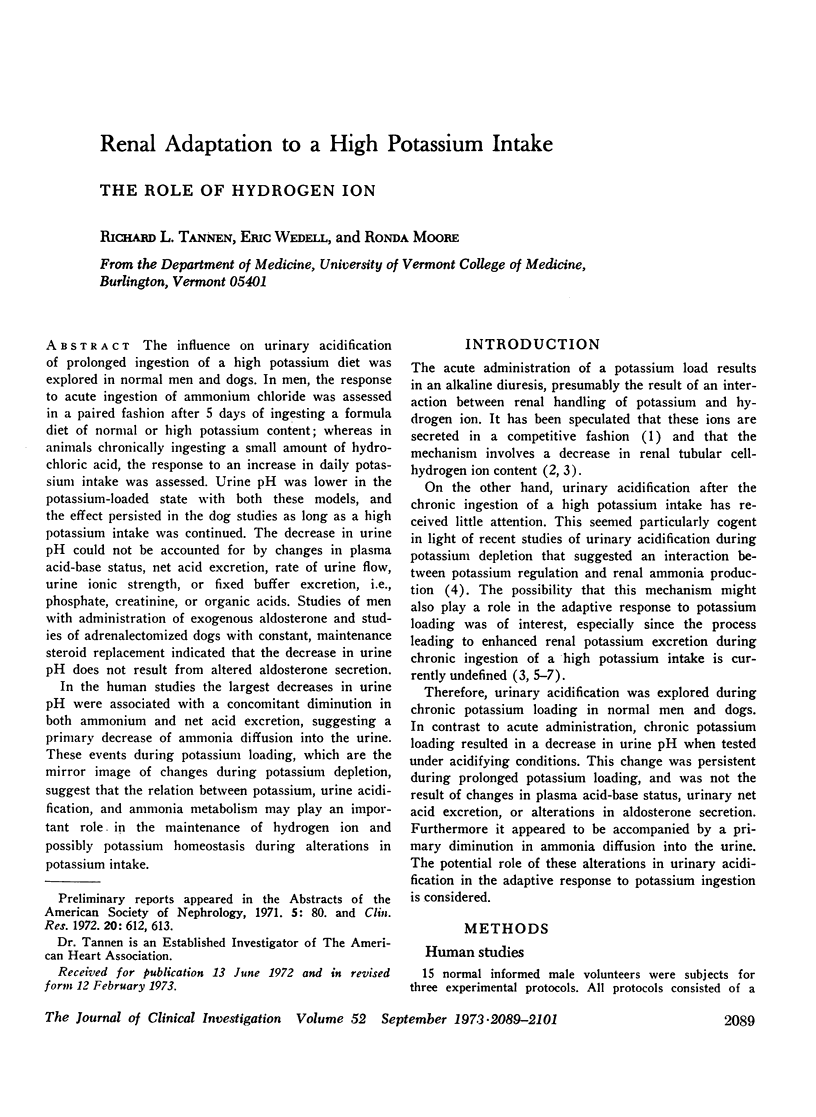
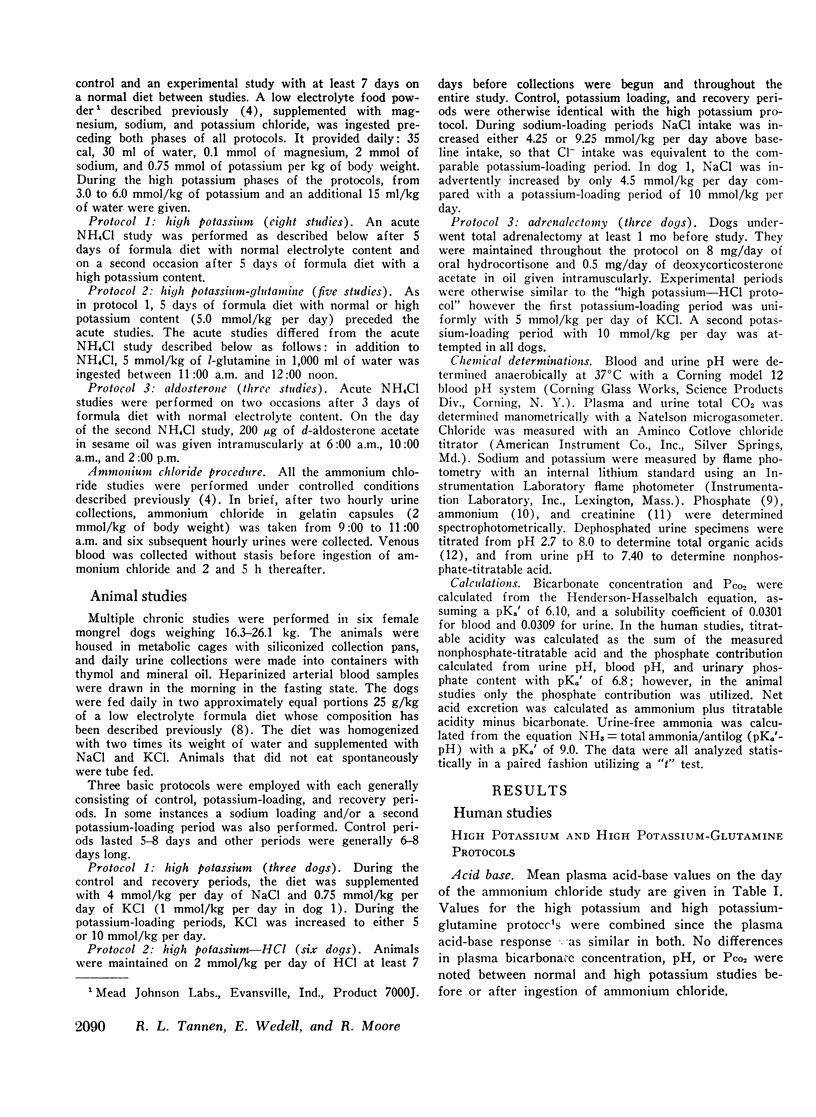
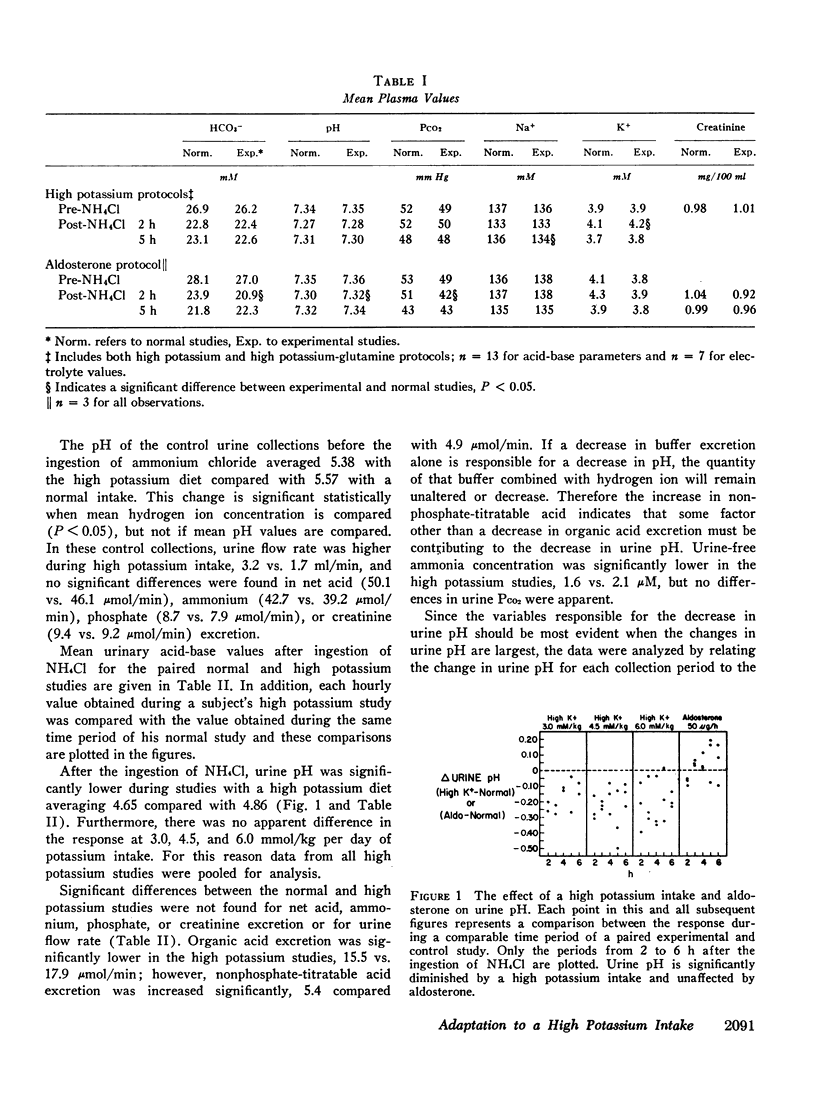
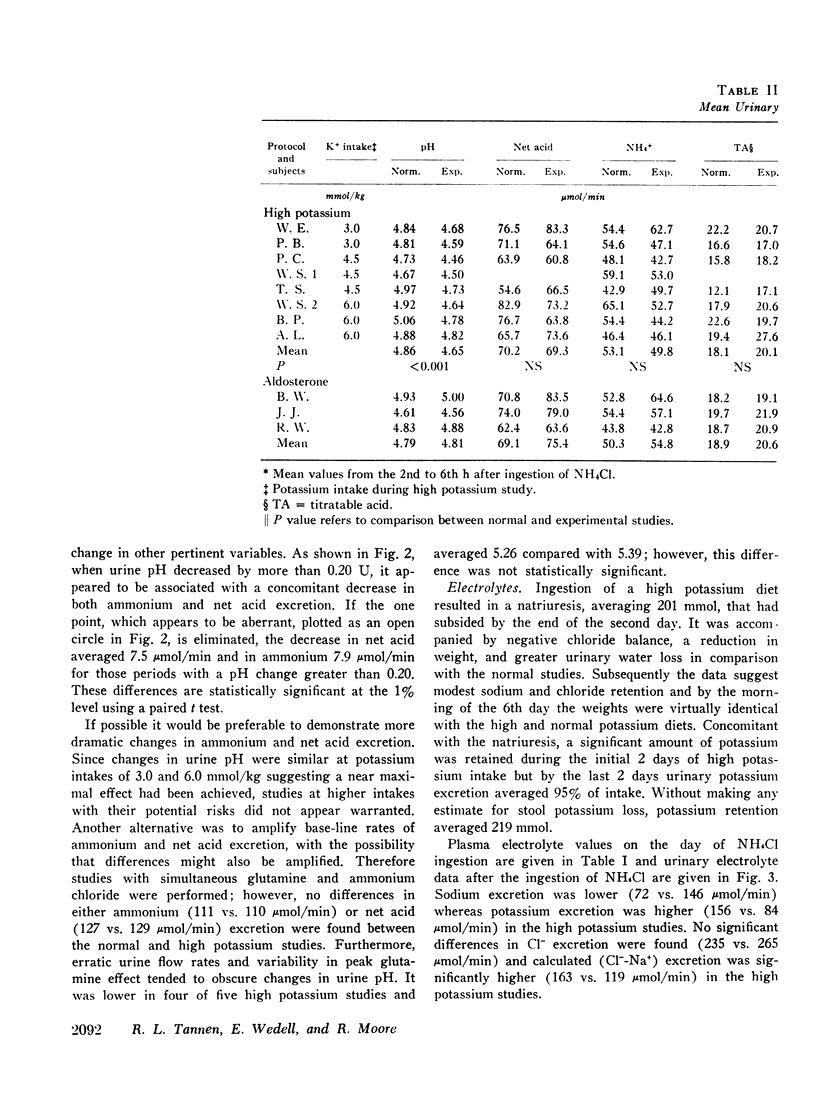
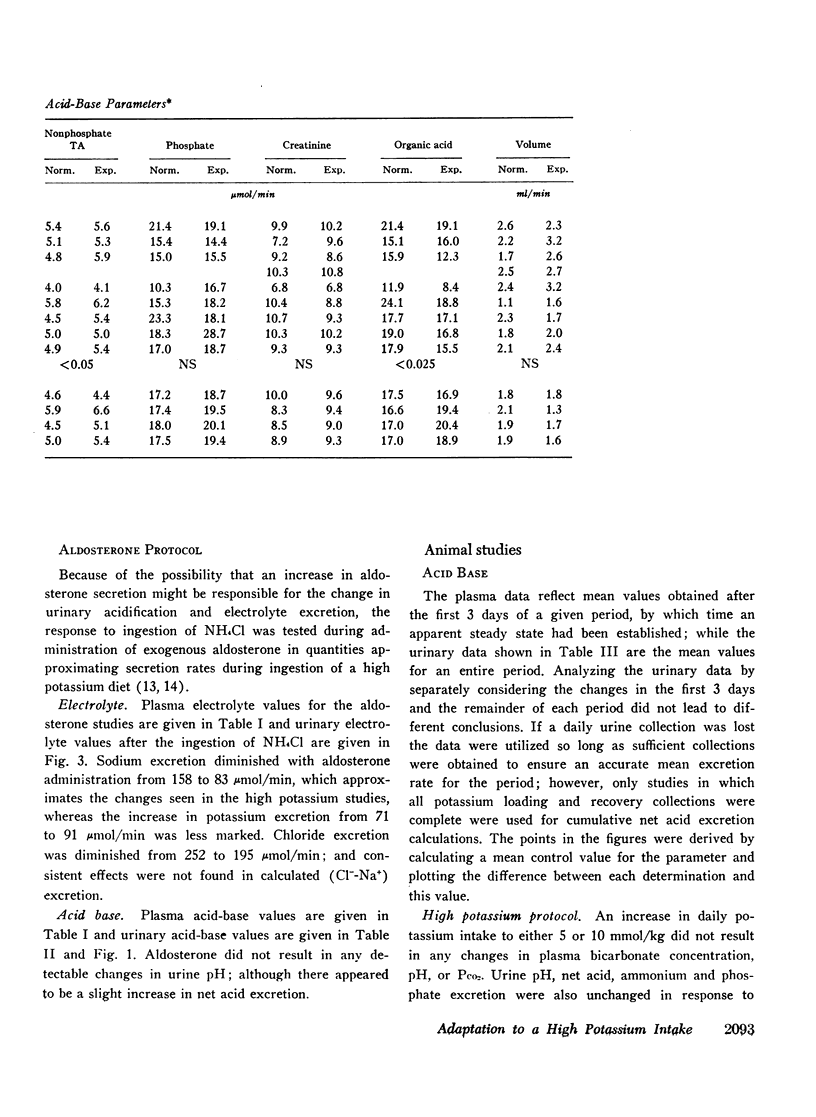
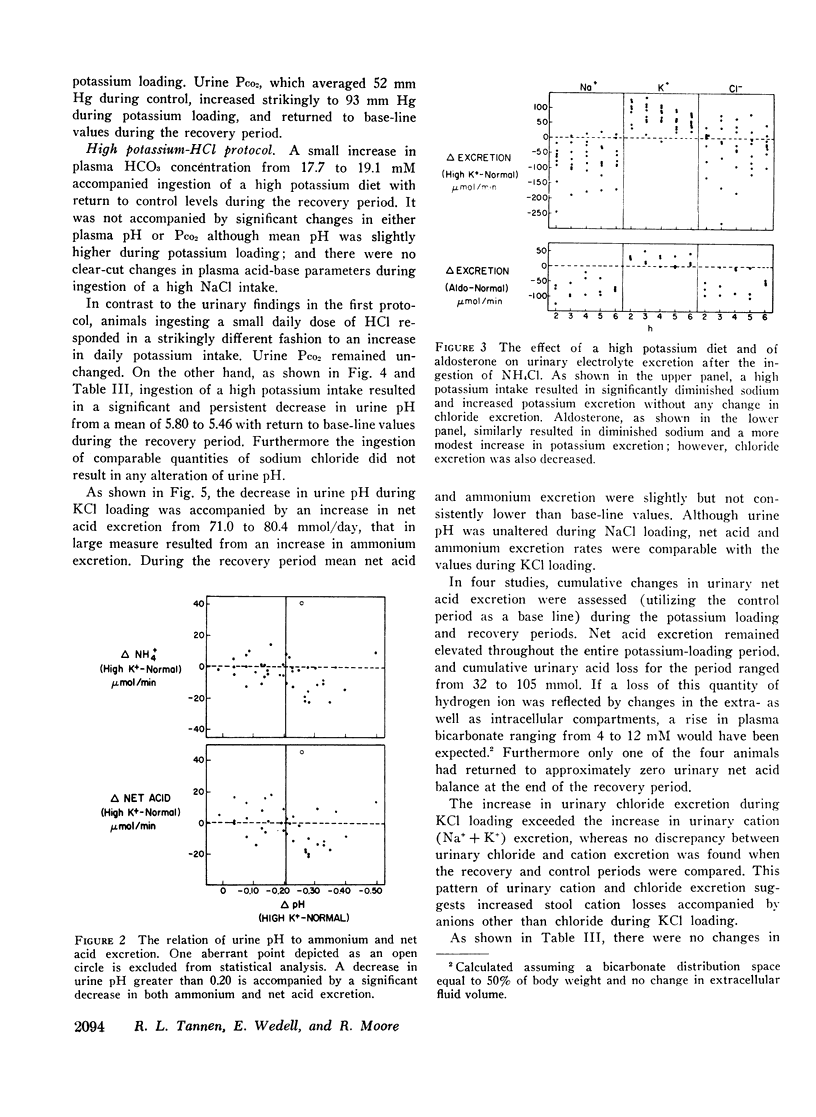
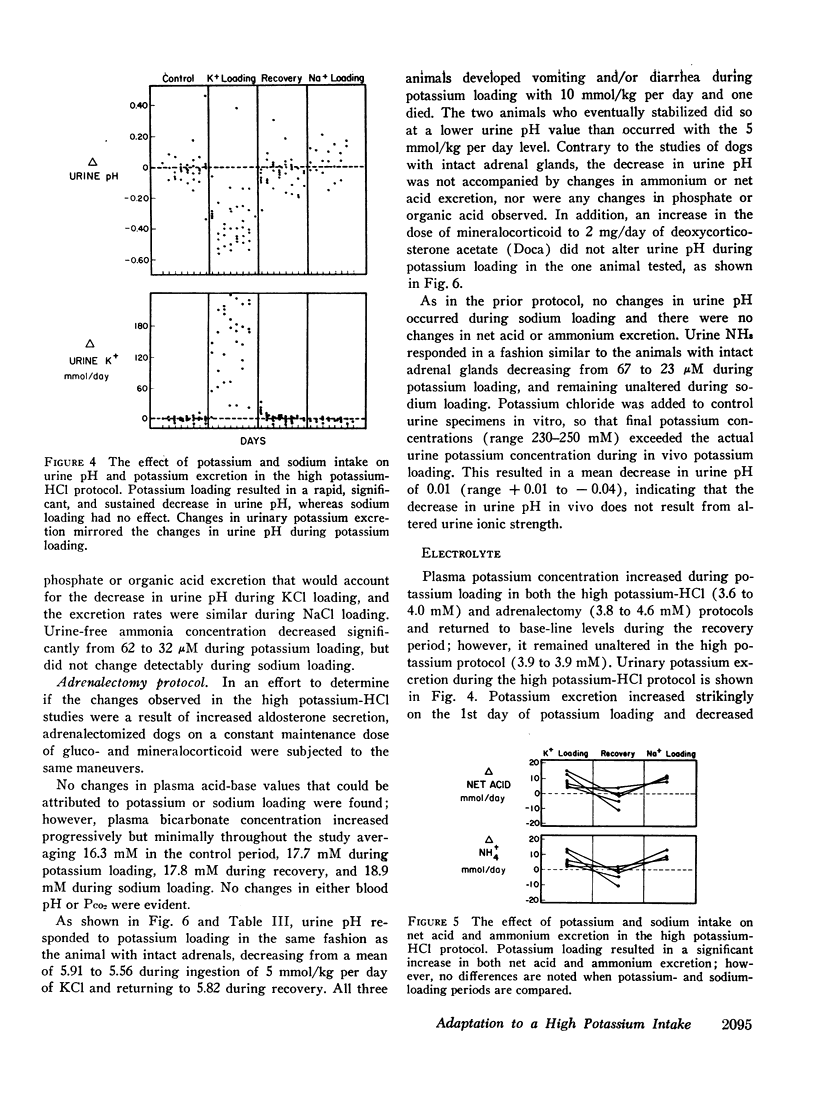
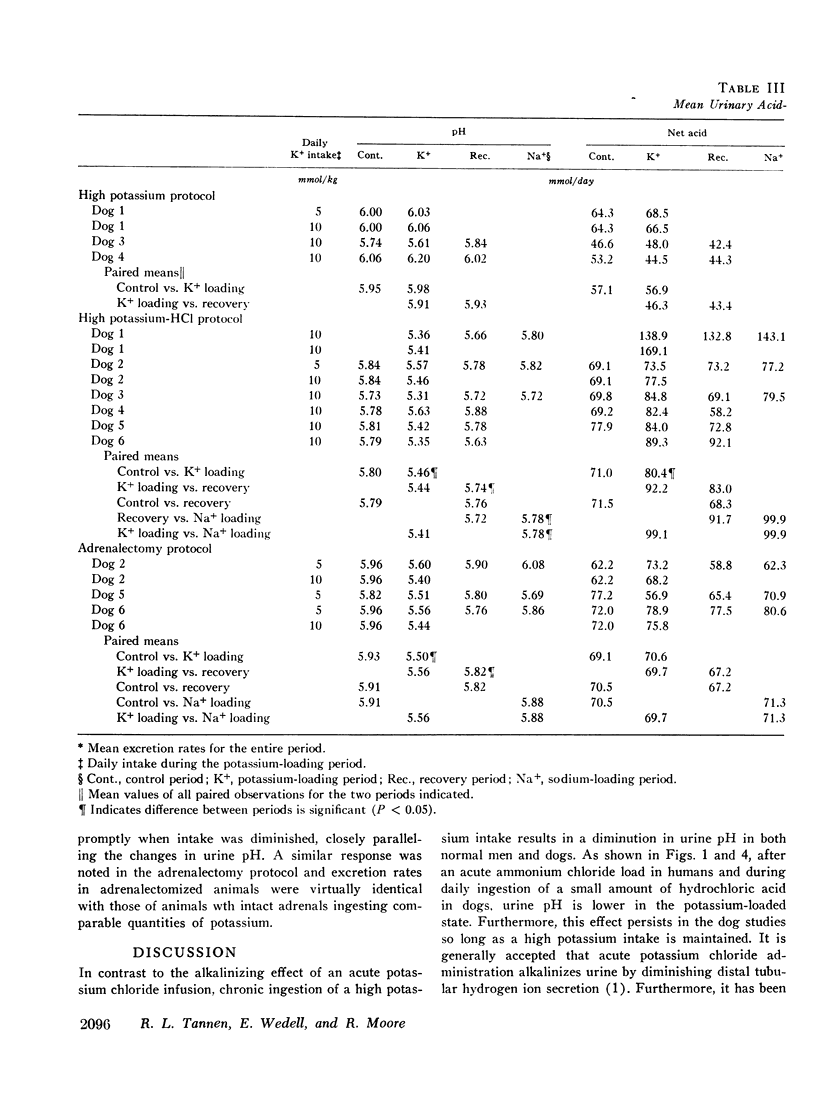
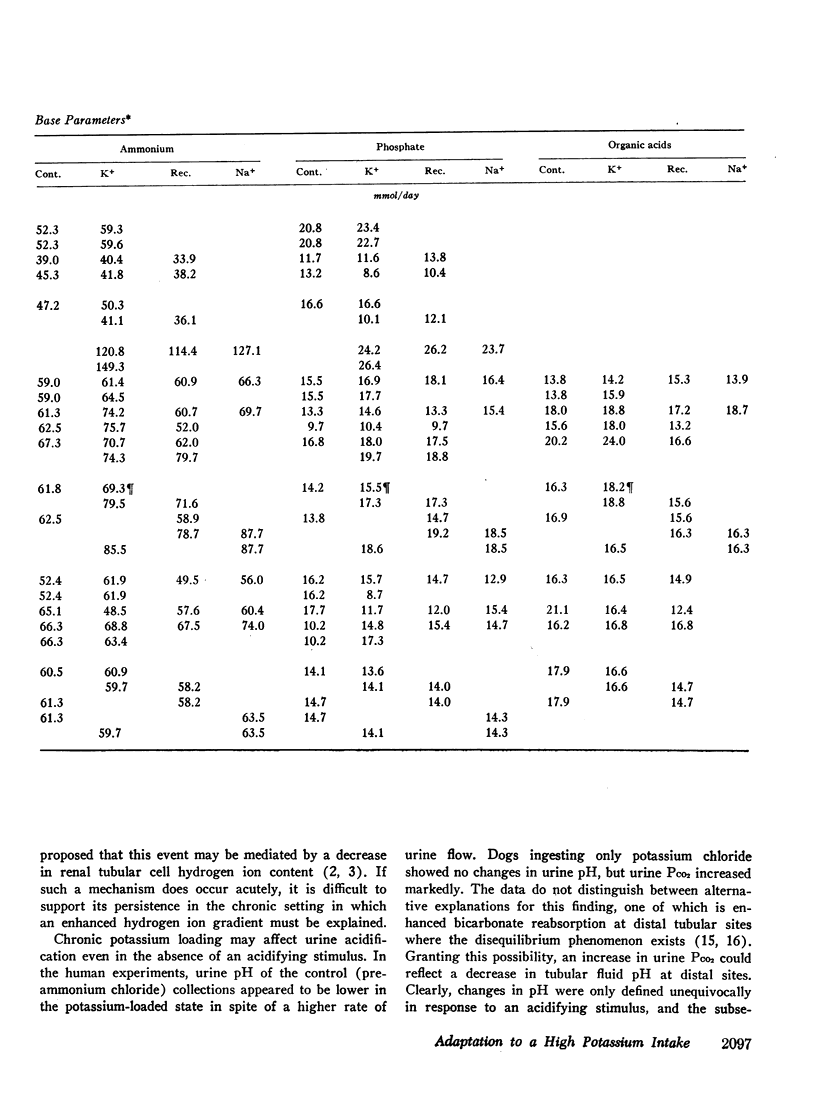
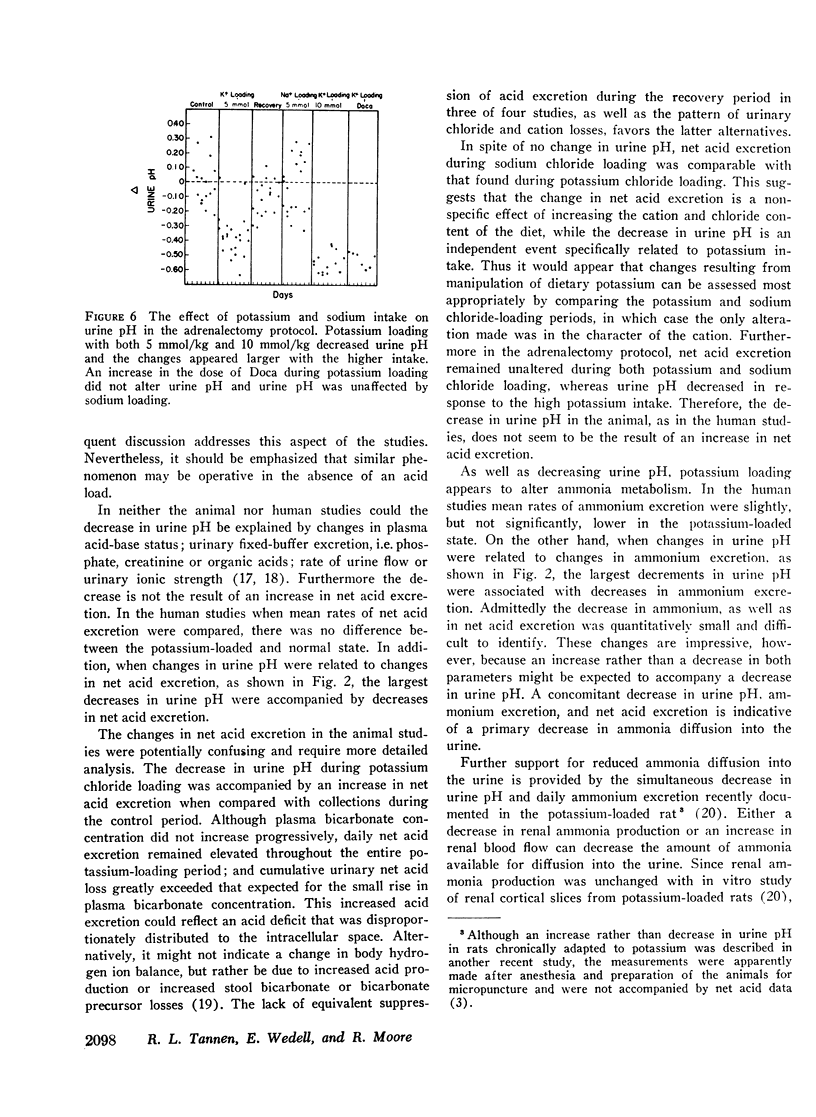
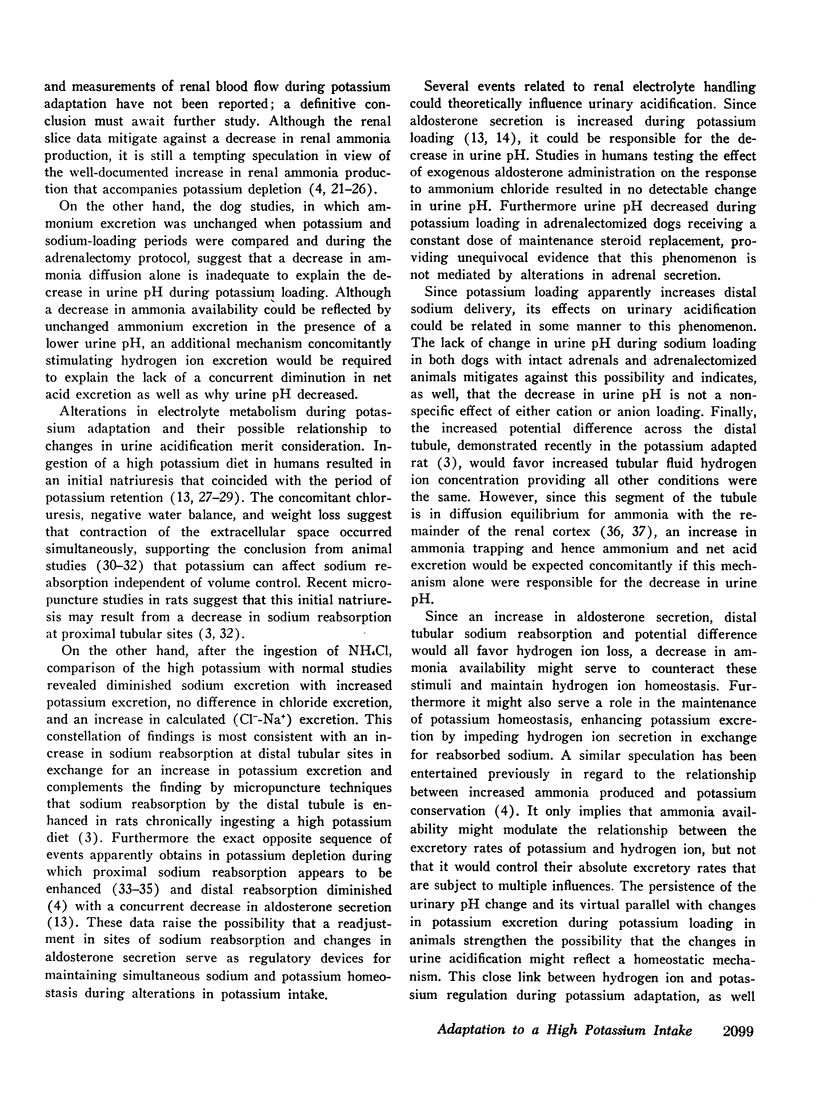
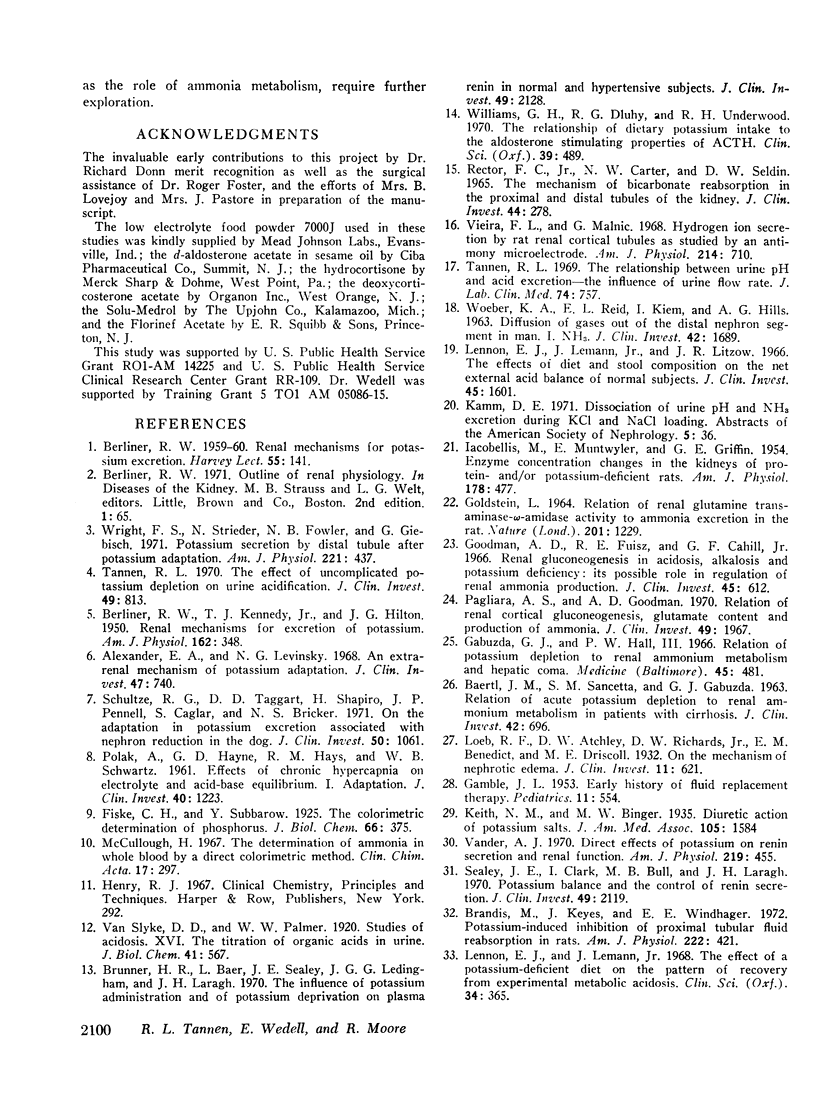
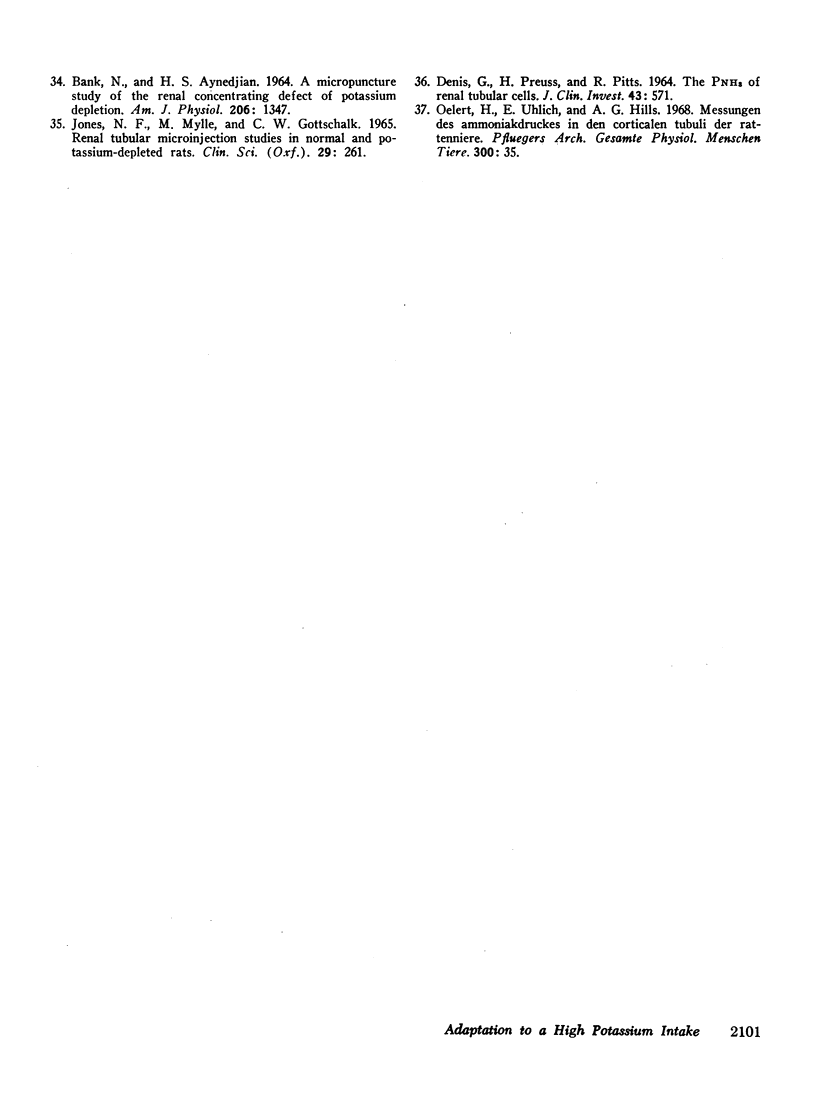
Selected References
These references are in PubMed. This may not be the complete list of references from this article.
- Alexander E. A., Levinsky N. G. An extrarenal mechanism of potassium adaptation. J Clin Invest. 1968 Apr;47(4):740–748. doi: 10.1172/JCI105769. [DOI] [PMC free article] [PubMed] [Google Scholar]
- BAERTL J. M., SANCETTA S. M., GABUZDA G. J. Relation of acute potassium depletion to renal ammonium metabolism in patients with cirrhosis. J Clin Invest. 1963 May;42:696–706. doi: 10.1172/JCI104761. [DOI] [PMC free article] [PubMed] [Google Scholar]
- BANK N., AYNEDJIAN H. S. A MICROPUNCTURE STUDY OF THE RENAL CONCENTRATING DEFECT OF POTASSIUM DEPLETION. Am J Physiol. 1964 Jun;206:1347–1354. doi: 10.1152/ajplegacy.1964.206.6.1347. [DOI] [PubMed] [Google Scholar]
- BERLINER R. W., KENNEDY T. J., Jr, HILTON J. G. Renal mechanisms for excretion of potassium. Am J Physiol. 1950 Aug 1;162(2):348–367. doi: 10.1152/ajplegacy.1950.162.2.348. [DOI] [PubMed] [Google Scholar]
- Brandis M., Keyes J., Windhager E. E. Potassium-induced inhibition of proximal tubular fluid reabsorption in rats. Am J Physiol. 1972 Feb;222(2):421–427. doi: 10.1152/ajplegacy.1972.222.2.421. [DOI] [PubMed] [Google Scholar]
- Brunner H. R., Baer L., Sealey J. E., Ledingham J. G., Laragh J. H. The influence of potassium administration and of potassium deprivation on plasma renin in normal and hypertensive subjects. J Clin Invest. 1970 Nov;49(11):2128–2138. doi: 10.1172/JCI106430. [DOI] [PMC free article] [PubMed] [Google Scholar]
- DENIS G., PREUSS H., PITTS R. THE PNH3 OF RENAL TUBULAR CELLS. J Clin Invest. 1964 Apr;43:571–582. doi: 10.1172/JCI104942. [DOI] [PMC free article] [PubMed] [Google Scholar]
- GAMBLE J. L. Early history of fluid replacement therapy. Pediatrics. 1953 May;11(5):554–567. [PubMed] [Google Scholar]
- GOLDSTEIN L. RELATION OF RENAL GLUTSMINE TRANSEMINASE-OMEGA-AMIDASE ACTIVITY TO AMMONIA EXCRETION IN THE RAT. Nature. 1964 Mar 21;201:1229–1230. doi: 10.1038/2011229a0. [DOI] [PubMed] [Google Scholar]
- Goodman A. D., Fuisz R. E., Cahill G. F., Jr Renal gluconeogenesis in acidosis, alkalosis, and potassium deficiency: its possible role in regulation of renal ammonia production. J Clin Invest. 1966 Apr;45(4):612–619. doi: 10.1172/JCI105375. [DOI] [PMC free article] [PubMed] [Google Scholar]
- IACOBELLIS M., MUNTWYLER E., GRIFFIN G. E. Enzyme concentration changes in the kidneys of protein- and/or potassium-deficient rats. Am J Physiol. 1954 Sep;178(3):477–482. doi: 10.1152/ajplegacy.1954.178.3.477. [DOI] [PubMed] [Google Scholar]
- Jones N. F., Mylle M., Gottschalk C. W. Renal tubular microinjection studies in normal and potassium-depleted rats. Clin Sci. 1965 Oct;29(2):261–275. [PubMed] [Google Scholar]
- Lennon E. J., Lemann J., Jr, Litzow J. R. The effects of diet and stool composition on the net external acid balance of normal subjects. J Clin Invest. 1966 Oct;45(10):1601–1607. doi: 10.1172/JCI105466. [DOI] [PMC free article] [PubMed] [Google Scholar]
- Lennon E. J., Lemann J., Jr The effect of a potassium-deficient diet on the pattern of recovery from experimental metabolic acidosis. Clin Sci. 1968 Apr;34(2):365–378. [PubMed] [Google Scholar]
- Loeb R. F., Atchley D. W., Richards D. W., Benedict E. M., Driscoll M. E. ON THE MECHANISM OF NEPHROTIC EDEMA. J Clin Invest. 1932 May;11(3):621–639. doi: 10.1172/JCI100438. [DOI] [PMC free article] [PubMed] [Google Scholar]
- McCullough H. The determination of ammonia in whole blood by a direct colorimetric method. Clin Chim Acta. 1967 Aug;17(2):297–304. doi: 10.1016/0009-8981(67)90133-7. [DOI] [PubMed] [Google Scholar]
- Oelert H., Uhlich E., Hills A. G. Messungen des Ammoniakdruckes in den corticalen Tubuli der Rattenniere. Pflugers Arch Gesamte Physiol Menschen Tiere. 1968;300(1):35–48. [PubMed] [Google Scholar]
- POLAK A., HAYNIE G. D., HAYS R. M., SCHWARTZ W. B. Effects of chronic hypercapnia on electrolyte and acid-base equilibrium. I. Adaptation. J Clin Invest. 1961 Jul;40:1223–1237. doi: 10.1172/JCI104353. [DOI] [PMC free article] [PubMed] [Google Scholar]
- Pagliara A. S., Goodman A. D. Relation of renal cortical gluconeogenesis, glutamate content, and production of ammonia. J Clin Invest. 1970 Nov;49(11):1967–1974. doi: 10.1172/JCI106416. [DOI] [PMC free article] [PubMed] [Google Scholar]
- RECTOR F. C., Jr, CARTER N. W., SELDIN D. W. THE MECHANISM OF BICARBONATE REABSORPTION IN THE PROXIMAL AND DISTAL TUBULES OF THE KIDNEY. J Clin Invest. 1965 Feb;44:278–290. doi: 10.1172/JCI105142. [DOI] [PMC free article] [PubMed] [Google Scholar]
- Schultze R. G., Taggart D. D., Shapiro H., Pennell J. P., Caglar S., Bricker N. S. On the adaptation in potassium excretion associated with nephron reduction in the dog. J Clin Invest. 1971 May;50(5):1061–1068. doi: 10.1172/JCI106577. [DOI] [PMC free article] [PubMed] [Google Scholar]
- Sealey J. E., Clark I., Bull M. B., Laragh J. H. Potassium balance and the control of renin secretion. J Clin Invest. 1970 Nov;49(11):2119–2127. doi: 10.1172/JCI106429. [DOI] [PMC free article] [PubMed] [Google Scholar]
- Tannen R. L. The effect of uncomplicated potassium depletion on urine acidification. J Clin Invest. 1970 Apr;49(4):813–827. doi: 10.1172/JCI106295. [DOI] [PMC free article] [PubMed] [Google Scholar]
- Vander A. J. Direct effects of potassium on renin secretion and renal function. Am J Physiol. 1970 Aug;219(2):455–459. doi: 10.1152/ajplegacy.1970.219.2.455. [DOI] [PubMed] [Google Scholar]
- Vieira F. L., Malnic G. Hydrogen ion secretion by rat renal cortical tubules as studied by an antimony microelectrode. Am J Physiol. 1968 Apr;214(4):710–718. doi: 10.1152/ajplegacy.1968.214.4.710. [DOI] [PubMed] [Google Scholar]
- WOEBER K. A., REID E. L., KIEM I., HILLS A. G. DIFFUSION OF GASES OUT OF THE DISTAL NEPHRONSEGMENT IN MAN. I. NH3. J Clin Invest. 1963 Nov;42:1689–1704. doi: 10.1172/JCI104855. [DOI] [PMC free article] [PubMed] [Google Scholar]
- Williams G. H., Dluhy R. G., Underwood R. H. The relationship of dietary potassium intake to the aldosterone stimulating properties of ACTH. Clin Sci. 1970 Oct;39(4):489–496. doi: 10.1042/cs0390489. [DOI] [PubMed] [Google Scholar]
- Wright F. S., Strieder N., Fowler N. B., Giebisch G. Potassium secretion by distal tubule after potassium adaptation. Am J Physiol. 1971 Aug;221(2):437–448. doi: 10.1152/ajplegacy.1971.221.2.437. [DOI] [PubMed] [Google Scholar]


